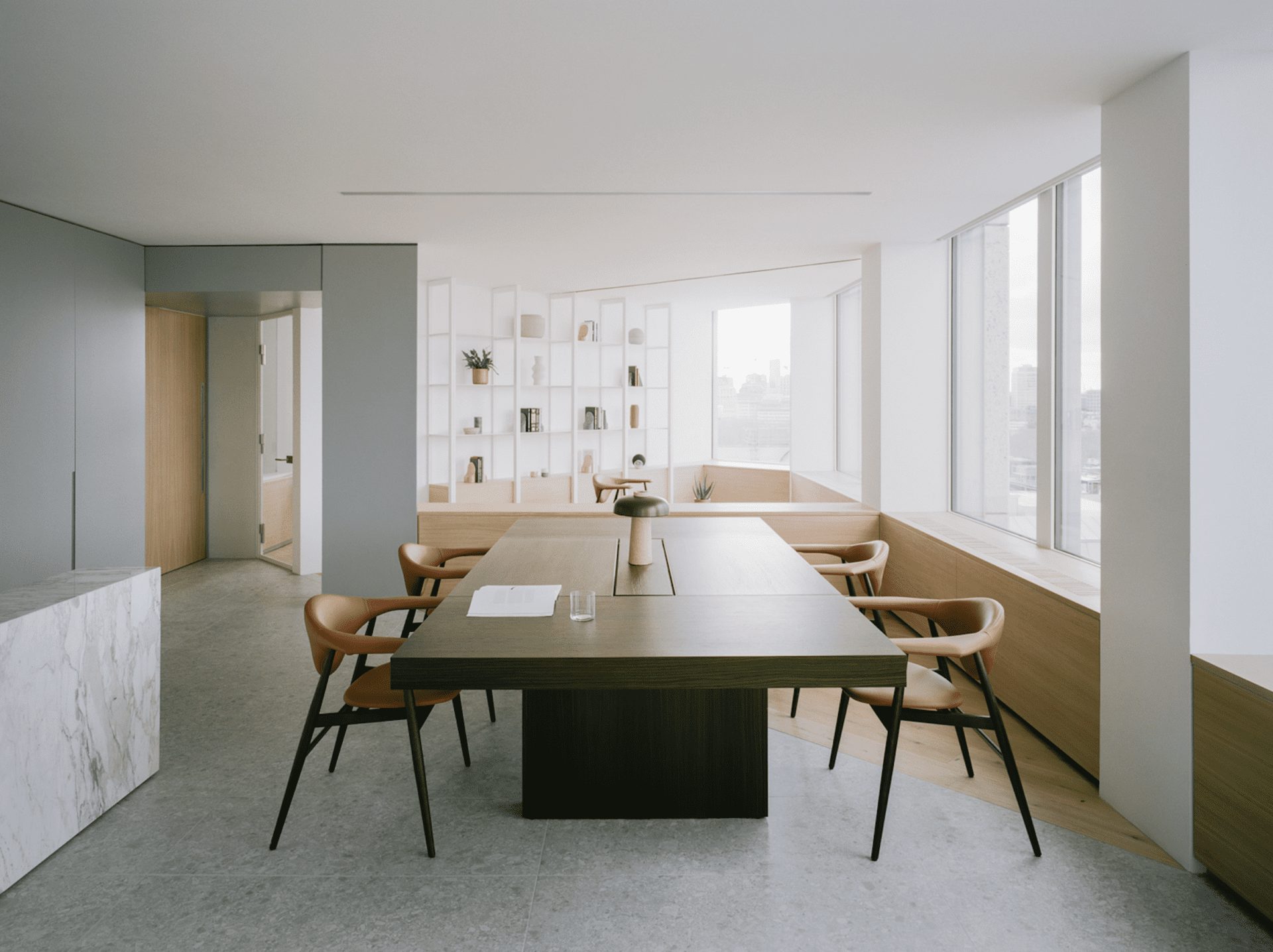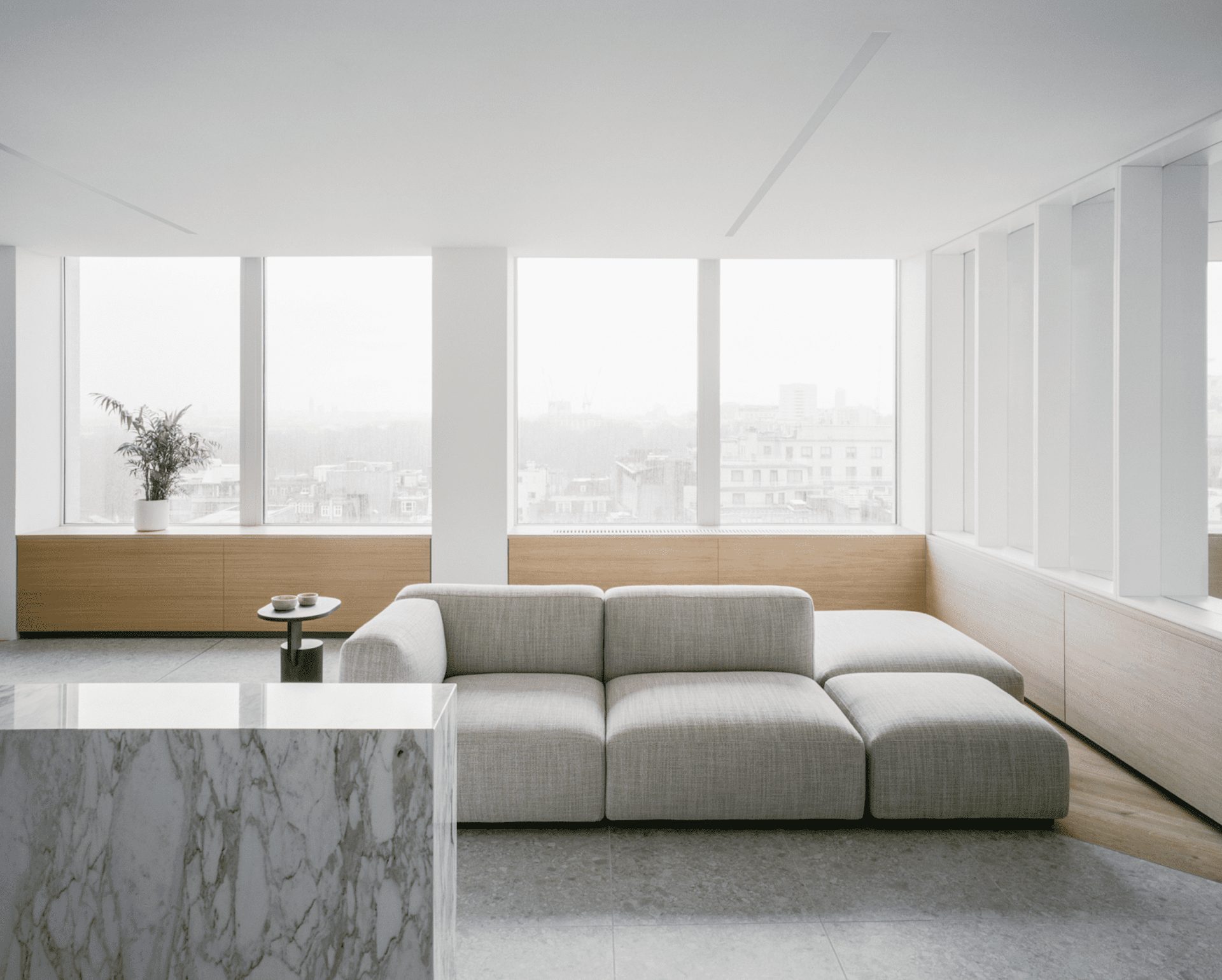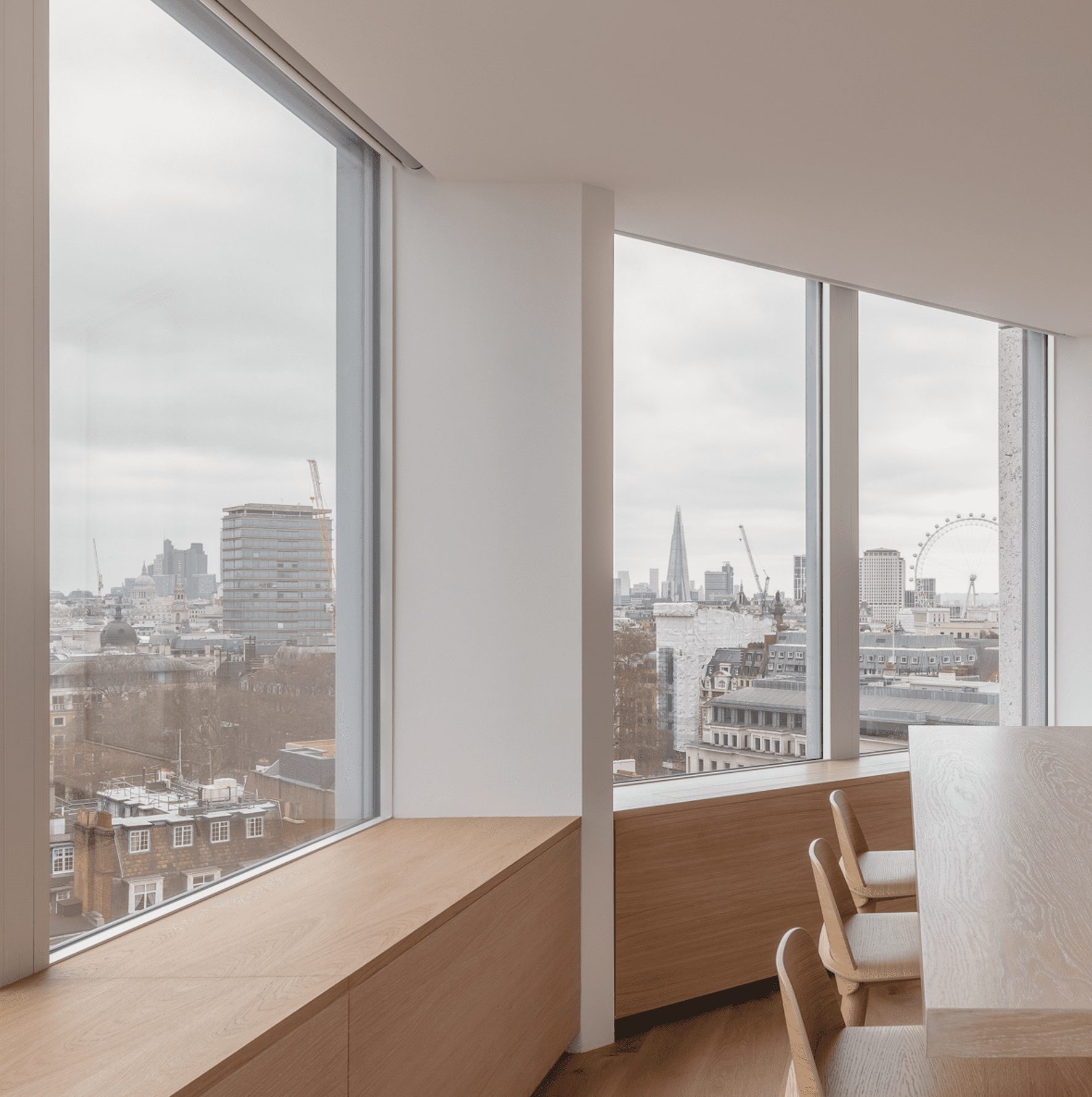
Featuring light and airy spaces, this minimalist office is a haven of calm in the bustling metropolis
A modernist icon completed in 1964 by celebrated British architects Alison and Peter Smithson, London’s Smithson Tower – previously known as the Economist Building – is, alongside the adjacent buildings in the plaza (and the plaza itself), a collective modernist masterpiece.
Following the departure of the Economist magazine in 2016, the building underwent extensive refurbishment, with each 3,600sq ft floor plate emptied and primed for individual leases. One of these spaces was recently revamped by London-based practice ConForm Architects who were tasked with designing a new HQ for a financial client on the building’s 11th floor.

Located in the heart of London’s historic Mayfair, the building’s octagonal layouts typically had circulation around a single central core. The interiors of each office featured partitions which aligned with the perimeter façade’s columns, while the heart of the office offered unparalleled 360° views of London.
This condition provided the foundation for a modern, open-plan proposal. Informing initial thoughts and discussions with the client, who wished to retain the open nature of the space, there was also a need for additional privacy and acoustic separation for meeting rooms and between various operational spaces.

Responding to the contemporary move towards designing offices that are collaborative rather than cellular, ConForm fulfilled the client’s aspiration for an office that allows for different ways of occupation. As such, informal, comfortable and domestic-inspired working environments create a home away from home for guests and staff.
While the space feels open and offers spectacular city views, the design concept also respects and celebrates the uniqueness of the classic layout. For instance, the strong structural grid of the existing building and columns logically subdivides each of the eight zones, with each tailored to a different aspect of the work environment.

Furthermore, these textured, solid elements also provide clever storage solutions, concealing services and protection for the air handling units. Characterised by simplicity, clean lines and a timeless monochromatic palette, the result is a calm and uncluttered space which includes only the necessary elements.
This pared-back style is further evident in the existing white framing of the glazing which is conceptually and simply replicated, providing a deep threshold framing views between spaces. With a focus on natural elements, strong lines and neutral tones, the minimalist space reflects clarity and attention to detail.

However, one major challenge to the scheme was incorporating and adapting the existing air conditioning and heating/cooling infrastructure. The Economist Building was the first building in the UK to have air conditioning and the historic system was geared around exclusively servicing the cellular perimeter offices.
As the original circulation route correlated with that of the air ducting, the opportunity arose to accentuate this service zone by lowering the head height and lining the core with acoustic Kvadrat panels, providing a more intimate and contextual path circumnavigating the core.

Further historical research revealed an early concept sketch design undertaken by the Smithsons, of a diagonally gridded ceiling plan that sought to connect column and mullion locations to their counterpart on the perpendicular elevation at a 45° angle.
Junctions where these diagonals met the core featured angular internal feature columns, with this diagonal concept becoming a key design feature delineating spaces and connecting spaces across the plan. The octagonal plan form is replicated (internally) as floor finishes help to draw the eye across multiple spaces and blur any distinct thresholds between zones to maintain the open nature.

Following initial design exercises, fixed desk spaces were carefully placed to offer spectacular picturesque views of London, with the reception, boasting views across Green Park, Hyde Park and beyond, located by the passenger lifts. This allowed the often-high-capacity meeting rooms to avoid overheating during regular morning meetings and assisting the limited air circulation capacity.
Creating a simple yet beautiful workspace, ConForm Architects paired functionality with decorative elements to give this London space a minimalist refresh. With an emphasis on natural elements and balance, the result is an inviting and cohesive office where nothing is out of place.
Images by Lorenzo Zandri and Nicholas Worley





















